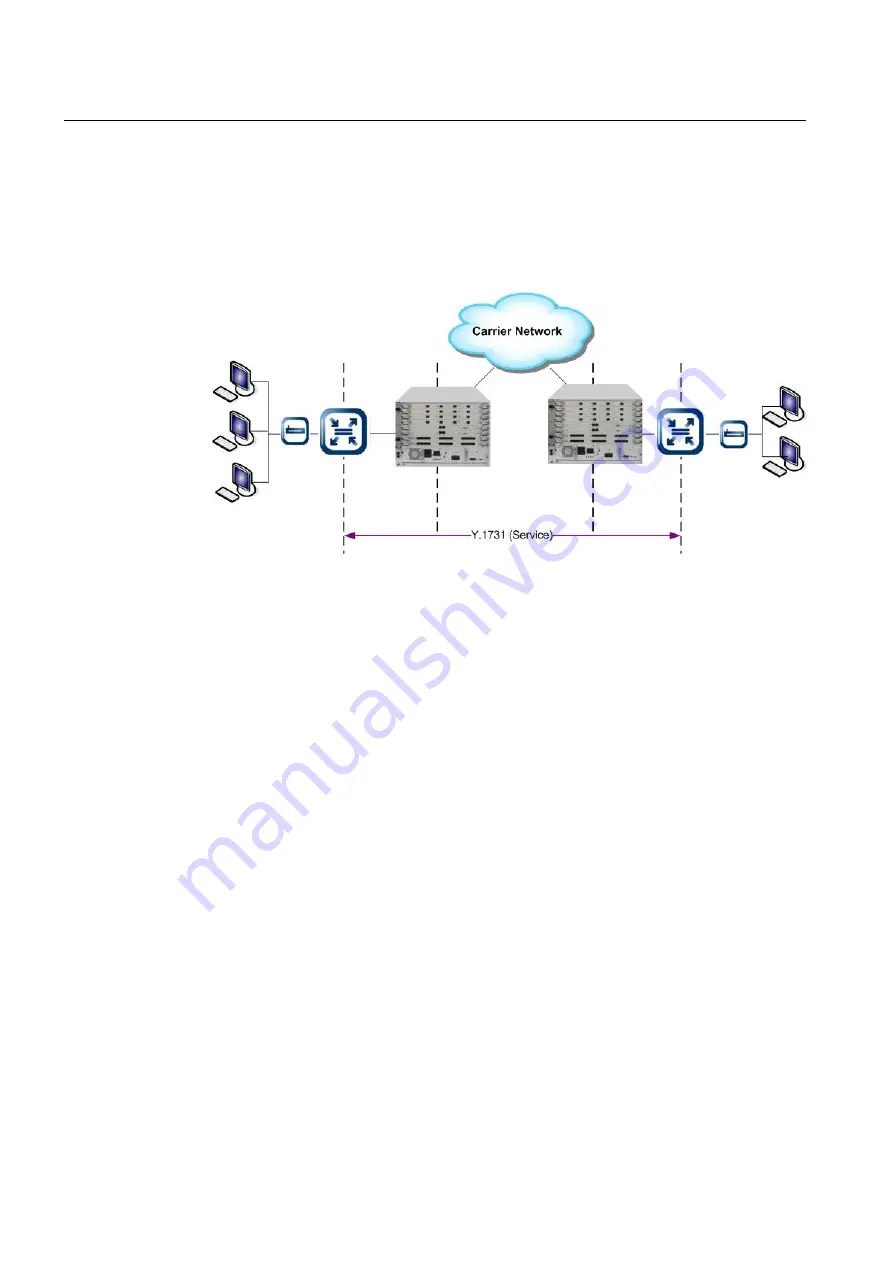
UMN:CLI
User Manual
V8102
184
7.7
Ethernet (ITU-T Y.1731) OAM
The ITU-T Y.1731 fault management functions feature provides new functions for fault
and performance management to serve the needs of service providers in large networks.
It is designed to support point-to-point connections and multipoint connectivity in the
Ethernet layer. The ITU-T Recommendation Y.1731 specifies OAM mechanisms to oper-
ate and maintain the network and service aspects of ETH layer.
Fig. 7.2
CFM and Y.1731 OAM for end-to-end visibility
Y.1731 OAM Elements
You need to know conceptual information of Y.1731 OAM. There are several definitions of
the Y.1731, they are in total agreement between each standard. However, Y.1731 adds
functions for performance monitoring and it is focusing on the services aspect of Ethernet.
Y.1731 OAM consists of the following management elements.
•
Maintenance Entity (ME)
An entity that requires management. It is a relationship between two Maintenance
entity group end points.
•
Maintenance Entity Group (MEG)
ME group includes different MEs that satisfy the following conditions:
- MEs in the same administrative boundary
- MEs have the same MEG level
- MEs belong to the same point-to-point ETH connection or multipoint ETH
connectivity.
•
MEG
End Point (MEP)
A marked end point of an ETH MEG that can initiate/terminate proactive OAM
frames for fault management and performance monitoring. The OAM frames are dis-
tinct from the transit ETH flows. Each MEP has a unique MEPID.
•
MEG Intermediate Point (MIP)
An intermediate point passively receives some OAM frames and responds back to
the originating MEP.
•
MIP Half Function (MHF)
A MIP is comprised of two MHFs, which are up MHF and down MHF. MHF enables
Y.1731 OAM to manage MIP CCM database as well as MEP CCM database.
















































